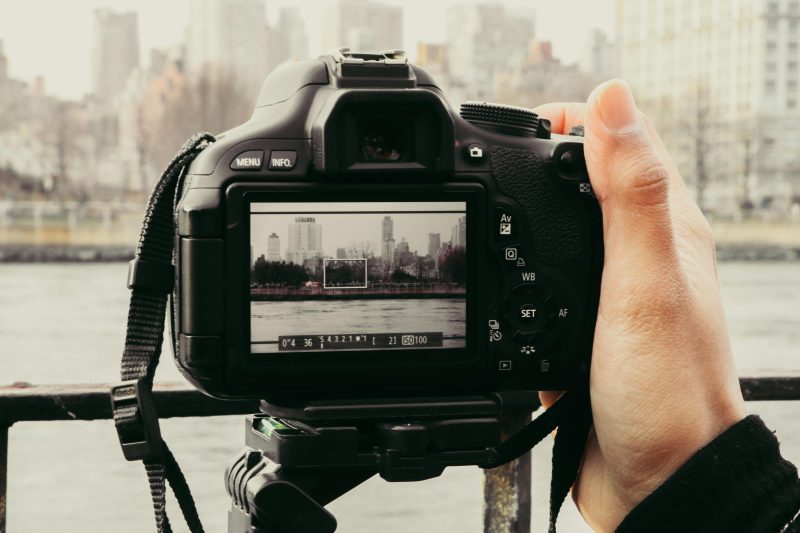Top 5 Photography Tips for Capturing Unique Shots of Famous Landmarks

Famous landmarks often dominate travel itineraries and photography wish lists, yet capturing them in a way that feels fresh and original can be surprisingly challenging. Literal millions of tourists photograph these iconic sites every year, leaving little room for creativity—or so it seems.
For aspiring photographers and hobbyists, standing out means rethinking how you approach these celebrated scenes. The key to unique shots isn’t just about the landmark itself but your perspective, timing, and creative vision. With the right techniques, even the most recognisable locations can be seen in a new light. Whether you’re aiming for intricate details or a harmonious blend of architecture and life, your photos can tell a story all your own.
Looking for ideas for this photography endeavour? Here are six practical tips to elevate how you take pictures of famous landmarks and help you capture images as iconic as the places themselves.
Shoot During Golden Hour or Blue Hour
Light can transform the ordinary into the extraordinary, and this is especially true for famous landmarks. The golden hour, which is the time just after sunrise or before sunset, bathes your subject in warm, soft tones. In contrast, the blue hour—occurring just before dawn or after dusk—adds a sombre, moody atmosphere. These times of day not only enhance the colours and textures of landmarks but also create a sense of depth, which is often absent during midday when the light is too bright.
If you want to highlight these effects but lack the appropriate equipment, such as a prime or wide-angle lens to capture finer details or broader perspectives, there are plenty of alternatives. In particular, camera lens hire services provide a practical solution, allowing you to experiment with professional-grade lenses without committing to a purchase. Whether it’s the Eiffel Tower glowing in the evening light or the Grand Canyon at dawn, the right lens can elevate your photos during these magical hours.
Use Unique Perspectives
Landmarks are renowned for a reason, but capturing them from the same vantage point as everyone else rarely results in a standout photo. As such, look for angles or perspectives that offer a fresh take. Explore elevated viewpoints, such as nearby rooftops, hills, or observation decks. Alternatively, get closer to frame the landmark through natural elements like trees, windows, or arches. These techniques not only make your photos more dynamic but also create a sense of depth and scale.
For example, instead of photographing the Taj Mahal head-on, try capturing its reflection in the water or framing it with the entry arch. Similarly, shooting the Sydney Opera House from across the harbour through overhanging tree branches can add a unique and artistic touch. Think creatively and step away from conventional compositions to create images that truly stand out.

Include Local Life or Context
Iconic sites don’t exist in isolation. They’re often surrounded by vibrant local life and rich cultural context. Consider incorporating these elements into your photos to add depth and storytelling, transforming a static shot into a dynamic narrative. Observing how people interact with the landmark—whether it’s street vendors, tourists attending festivals, or locals enjoying quiet moments of everyday life—offers endless opportunities for unique compositions.
Imagine capturing the Eiffel Tower with a painter at work on the Champ de Mars or photographing Big Ben framed by Londoners hurrying through the city streets. These details breathe life into your images, allowing you to showcase the landmark as part of a living world. By blending iconic architecture with the human element, your photos will resonate more deeply with viewers, offering a sense of place and a personal connection.
Play With Shadows and Silhouettes
Shadows and silhouettes can turn a well-known landmark into an intriguing work of art. You can highlight dramatic contrasts, abstract shapes, or even create an air of mystery in your photos by simply experimenting with light and shadow. Position the landmark between you and the light source, such as the sun during sunrise or sunset, to capture its bold silhouette against a colourful sky.
Capturing the Sydney Opera House silhouetted against a fiery sunset or the pyramids of Giza with long, stretching shadows at dusk evokes a sense of timeless wonder. Likewise, shadows cast by intricate architecture, like the lattice patterns at the Alhambra Palace in Spain, can add texture and depth to your images. Essentially, experimenting with exposure settings and creative framing will allow you to make even the most familiar landmarks feel captivating and unique.

Focus on Architectural Details
While grand views of famous landmarks are captivating, sometimes the magic lies in the details. Zooming in on intricate patterns, textures, or design elements can reveal a whole new perspective that’s often overlooked. This approach highlights the craftsmanship and artistry that make these landmarks iconic.
For example, instead of capturing the entire façade of Notre Dame Cathedral, focus on its ornate gargoyles or the intricate stained-glass windows. Similarly, at the Alhambra, the vibrant mosaic tiles and carved arabesques offer a wealth of photographic opportunities. When you narrow your focus to these finer elements, you can produce images that stand out from the typical wide-angle shots—showcasing the beauty of the landmark more intimately.
Creating distinctive images of famous landmarks is about seeing beyond the obvious and embracing your creative instincts. By applying thoughtful techniques and exploring new approaches, you can transform even the most familiar scenes into something personal and compelling. Take the leap, play with elements, and let your photos reflect your narrative.

